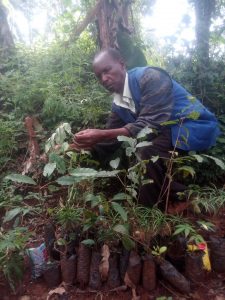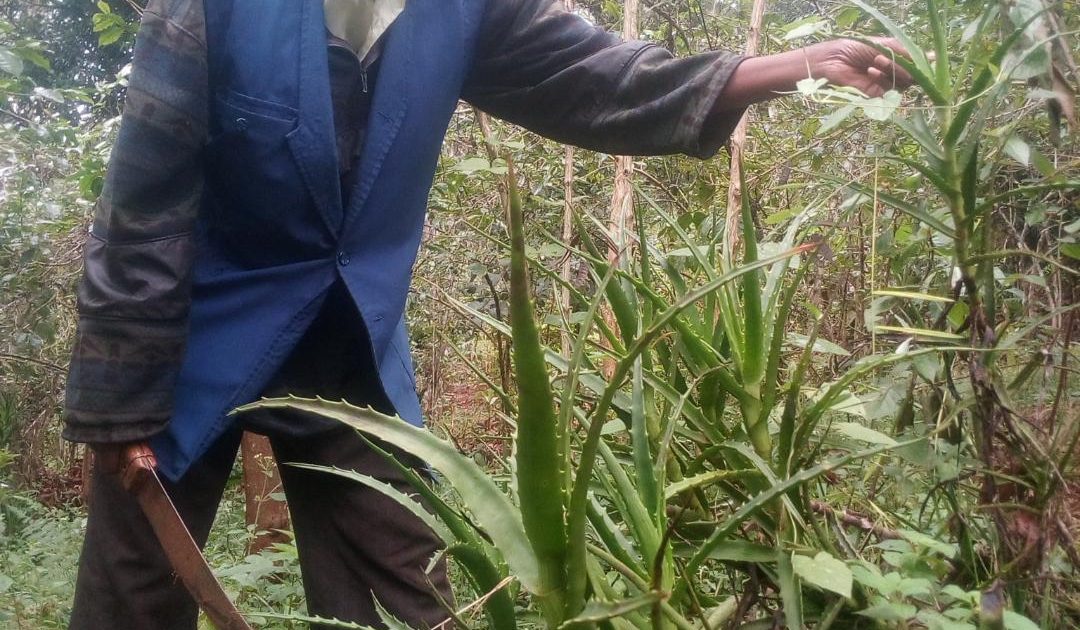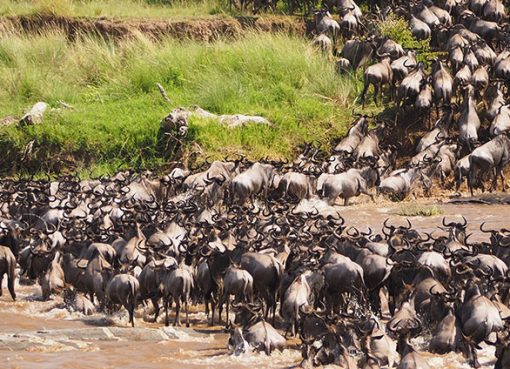
Kenyan scientists have been challenged to research on some indigenous medicinal trees and herbs since they could be the answer for the deadly Coronavirus that is spreading like bushfire the world over.
An environmentalist, Peter Wamui Munyaka strongly believes scientific investigations into the efficacy of cloton megalocarpus (mukinduri), pistacia aethiopica (muheheti), cordia Africana ( Muringa), Prunus Africana (Muiri), and aloe vera ( mugwa nugu) and anjuga rimota ( Wanjiru wa rurii) herbs could unearth the cure for Covid-19 that has claimed over 497,000 lives worldwide as of Sunday, June, 28, 2020.
Wamui said such indigenous trees have been used by different communities in Kenya and Africa at large to cure myriad diseases including malaria, pneumonia and liver and kidney problems.
Wamui added since Covid-19 is a respiratory disease scientists should particularly narrow their analysis of indigenous trees said to cure pneumonia and other chest problems among them pistacia aethiopica, cloton megalocarpus, cordia Africana and Podocarpus Falcatus (muthengera)
Speaking to KNA at his farm in Mbari ya Nguura village in Mukurwe-ini, Nyeri County recently, Wamui further suggested that ginger, garlic, lemon, pawpaw leaves and custard apple (the heart fruit) also be subjected to scientific tests as they had numerous medicinal benefits.
And to give credence to Wamui’s sentiments, former JKUAT Vice Chancellor Prof. Nick Wanjohi had once described Erytherina Tormentosa as a wonder tree revealing that Muhuti as it is known in Kikuyu in is a power bank of medicines.
Muhuti is believed to cure among other ailments liver and kidney problems and according to a renowned cardiologist
Dr. Dan Gikonyo, the two organs are highly damaged by coronavirus.
Dr. Gikonyo, the founder of Karen hospital recently explained that coronavirus first affects the lungs and then spreads to other vital organs.
Wamui’s sentiments comes at a time when Kenyan scientists have embarked on testing Ajuga Remota (Wanjiru wa rurii) to establish whether it could provide the elusive cure for Covid-19.
Two weeks ago researchers from the Institute of Primate Research (IPR) told a Kenyan daily newspaper that the herb would first be tested on monkeys before being administered to people.
The newspaper reported that the institute, the largest such facility in Africa, will use some of its 250 monkeys for the research.
“They plan to test an extract from a plant known as Ajuga remota, (Wanjiru wa Rurii in Kikuyu), and which has similar characteristics to the alleged herbal remedy from Madagascar, which is sourced from the plant Artemisia annua,” the newspaper write-up said in part.
“We believe that if the herbs are put to the test, they can help bring us close to finding a way to deal with Covid-19,”
Dr. Peter Mwethera, a senior research scientist at IPR was quoted by the daily.
The scientist, who helped develop what could be the world’s first HIV killer gel, added that the herb had shown promise in slowing down the effects of Covid-19.
Ajuga remota was traditionally used by communities in Mt. Kenya region namely Kikuyu, Embu and Mbeere to treat malaria.
Recently, the Kitui County Ecosystem Conservator, Joyce Nthuku said protecting forests can help the world find medicines to treat the coronavirus and potential future pandemics.
Speaking in Kyawea Forest in Kitui West Sub-County after a tree planting exercise, she lamented that deforestation and wildlife habitat destruction are signals for the rise of infectious diseases such as coronavirus globally.
“As climate change contributes to a surge in disease outbreaks across the world, scientists warn that current rates of environmental degradation and biodiversity loss will lead to more deadly pandemics,” she said.
Scientists warn that the total number of disease outbreaks has more than tripled each decade since the 1980s, adding more than two thirds of the diseases afflicting people today originate from animals.
Nthuku disclosed that habitat destruction like deforestation and agricultural development on forestland are increasingly forcing disease-carrying wild animals closer to humans, allowing new strains of infectious diseases to thrive.
“When you cut down trees and remove the forest, you eliminate the natural environment of some species. But those species don’t just disappear; they move closer to human habitation leading to the spike in infections,” said the Ecosystem Conservator.
Scientists say the coronavirus pandemic is the most recent instance of how human degradation of wildlife habitats is linked to the spread of infectious diseases.
The World Health Organization reports that an animal is the likely cause of the 2019 coronavirus (COVID-19), which has infected hundreds of thousands of people worldwide and placed a strain on the global economy.
By Kamiri Munyaka





